News
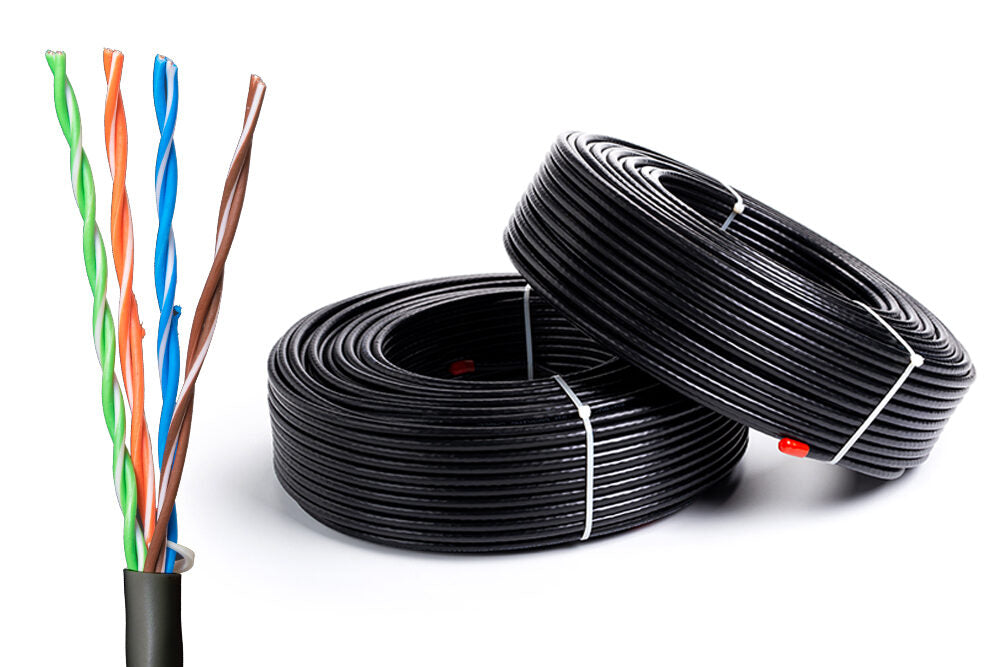
CAT6A
Installation Guide: Setting Up Indoor CAT6A Cable Reels
If you're looking to enhance your home or office network with faster speeds and better performance, using Indoor CAT6A cables is a great solution. Known for their ability to support higher speeds, up to 10Gbps over longer distances, these cables are perfect for modern networks that require high-speed internet and reliable performance. This guide will walk you through the process of setting up Indoor CAT6A cable reels, ensuring your network runs smoothly and efficiently.
Why Choose Indoor CAT6A Cables?
Before diving into the installation process, it's important to understand why Indoor CAT6A cables are a preferred choice for many. These cables are designed for high-performance data transfer and are suitable for gigabit internet connections and beyond. The CAT6A cable benefits include reduced crosstalk, improved signal integrity, and the ability to support faster speeds over longer distances.
Unlike standard CAT6 cables, CAT6A cables feature better shielding, which minimizes interference and ensures your network remains stable, even in high-demand environments. They are also built to support 10-Gigabit Ethernet (10GbE) over distances of up to 100 meters (328 feet). This makes them an ideal choice for both commercial and residential applications, especially for those needing high-performance networking.
Choosing the Best CAT6A Cable for Your Home Network
When setting up your indoor CAT6A installation, one of the first steps is choosing the best CAT6A cable for home network use. While all CAT6A cables offer similar technical benefits, some are more suited to specific needs than others. Consider the following factors when choosing the right cable:
Cable Length: Ensure the cable is long enough to cover the distance between your network devices without causing slack or strain.
Shielding: If you're installing the cable in an environment with high interference (e.g., near electrical equipment), opt for shielded cables (STP) to minimize signal disruption.
Flexibility: Look for cables with a high degree of flexibility if you're planning to install them in tight spaces or need to navigate around corners.
By understanding these factors, you'll be able to select the best cable for your needs, ensuring a seamless Indoor CAT6A installation.
Tools You’ll Need for Installation
To make the installation process go smoothly, gather the following tools and equipment before you begin:
Cable Reel: A good quality reel ensures that the cable is unwound evenly, preventing tangling and unnecessary stress on the wires.
Cable Strippers: These will help you remove the protective coating around the wires without damaging the inner conductors.
Crimping Tool: For attaching connectors like RJ45 to the cable ends.
Measuring Tape: To measure the required cable length accurately.
Cable Management Clips or Ties: These will help keep your cables organized and prevent them from sagging or getting caught.
Drill: If you're drilling holes in walls or ceilings to run the cables.
With the right tools at hand, you’ll be able to install your Indoor CAT6A cables efficiently and effectively.
Step-by-Step Guide for Installing Indoor CAT6A Cables
Step 1: Plan Your Network Layout
Before you start unwinding the cable, take time to plan the network layout. This will save you time and help prevent mistakes during installation. Consider where your network devices (such as routers, switches, or computers) will be placed, and identify the shortest and most direct path for the cable to travel.
If you're installing cables through walls or ceilings, mark the spots where you’ll need to drill holes. Use a measuring tape to determine the exact cable lengths needed for each section. This helps prevent wastage and ensures that each cable is cut to the correct length.
Step 2: Unwind the Cable from the Reel
Once you’ve mapped out your cable paths, it’s time to start unwinding the Indoor CAT6A cables from the reel. Begin at one end of the cable and pull it slowly, ensuring it doesn’t twist or knot. As you move along the cable path, carefully lay the cable flat to avoid kinks or damage.
Be mindful of the cable’s twist, as excessive twisting can impact the quality of the signal. This is especially important when you are installing long runs of cable, as a tight twist can degrade performance over time.
Step 3: Cut and Strip the Cable
When you reach the desired length, use your measuring tape to measure and cut the cable accordingly. Ensure that the cut is straight to avoid uneven edges. After cutting, use your cable strippers to remove the outer jacket of the cable, exposing the four twisted pairs of wires inside.
Be careful not to nick or damage the individual wires during this process. The goal is to expose the bare copper wires without affecting their integrity.
Step 4: Attach RJ 45 Connectors
The next step is to attach RJ45 connectors to the ends of the cables. This is where the crimping tool comes in handy. Begin by twisting the pairs of wires slightly and arranging them according to the standard wiring configuration (T568A or T568B). Insert the wires into the RJ45 connector, ensuring that each wire is fully seated at the end of the connector.
Use the crimping tool to secure the connector onto the cable. The tool will push metal pins inside the connector into the individual wires, ensuring a solid electrical connection.
Step 5: Test the Cable
After attaching the connectors, it’s important to test the cable before finalizing the installation. Use a cable tester to check for any faults in the connection. The tester will verify if the wiring is correct and if the signal is being transmitted properly. Testing ensures that there are no loose connections or incorrect wiring that could lead to network issues down the line.
Step 6: Secure the Cables and Complete the Installation
Now that your cables are ready, it’s time to secure them in place. Use cable management clips or ties to keep the cables neat. Secure them to walls, ceilings, or along baseboards to prevent sagging and ensure they’re out of the way. If necessary, drill small holes to feed cables through walls or ceilings, but always be cautious of existing electrical wiring or pipes.
Ensure that the cables are not pinched or overly bent as this can damage the internal wiring and affect network performance.
Tips for Successful Indoor CAT6A Installation
Avoid Sharp Bends: While running the cables, avoid sharp bends or twists. This can damage the cable and reduce its performance.
Use Cable Ties for Organization: Keeping cables organized will make future troubleshooting easier.
Consider Future Expansions: Leave extra cable length in case you need to expand or modify your network setup in the future.
Conclusion
Installing Indoor CAT6A cables can significantly enhance your home or office network, providing faster speeds and more reliable connections. By following this step-by-step guide and using the right tools and techniques, you can ensure a smooth installation process.
Whether you’re installing the best CAT6A cable for your home network or upgrading your current setup, taking the time to plan and execute the installation properly will result in a high-performance network that meets all your needs. Always remember to test the cables, avoid sharp bends, and keep things organized for a hassle-free setup. With these steps, your Indoor CAT6A installation will be a success, delivering the speed and performance your network deserves.
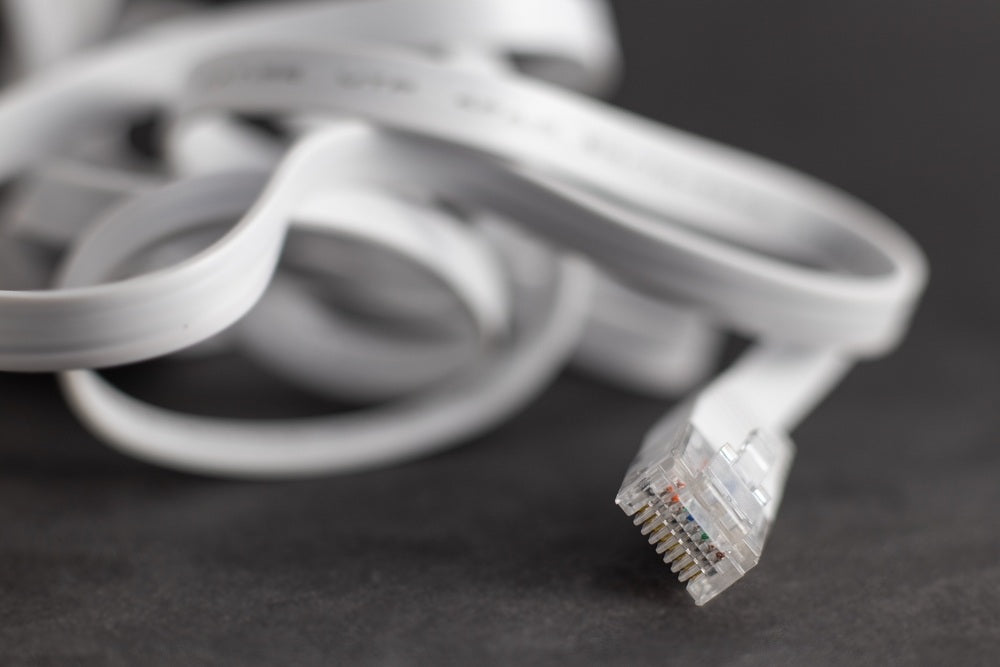
Ethernet Cables
The Top Benefits of Using a Flat Ethernet Cable for Your Network
When it comes to your network, the choice of cables can significantly affect your internet speed, reliability, and overall user experience. While round cables have been a popular choice for years, flat Ethernet cables are gaining traction due to their unique benefits. In this article, we will delve into these advantages and explain why these Ethernet cables might be the best option for your home or office setup.
What Is a Flat Ethernet Cable?
A flat Ethernet cable is a type of networking cable with a slim, flat design, making it different from traditional round cables. These cables provide the same level of connectivity but are much easier to manage and install in tight spaces. They are widely used for LAN network cables and are often considered the best flat Ethernet cables for modern setups.
Benefits of Using a Flat Ethernet Cable
1. Easy Installation in Tight Spaces
One of the most significant advantages of flat LAN cables is their ease of installation. Thanks to their slim design, these cables can be easily run under carpets, along walls, or through door gaps without creating a noticeable bulge. This makes the installation process a breeze, relieving potential stress or worry.
Perfect for home and office use
Ideal for hiding cables in tight spaces
Reduces cable clutter
2. Enhanced Flexibility
Unlike round cables, these Ethernet cables are more flexible and less prone to damage when bent. This flexibility makes them ideal for use in areas where cables need to be routed around furniture or through narrow spaces.
Can be bent without compromising performance
Suitable for complex cable management setups
Great for temporary installations
3. Improved Aesthetics
Flat cables are less obtrusive and blend well with the environment. If you are concerned about cable visibility in your home or office, flat LAN cables offer a sleek and professional appearance. Knowing that your network setup not only performs well but also looks good can make you feel proud of it.
Less visible under carpets and rugs
Matches modern interior designs
Suitable for minimalistic setups
4. Better Heat Dissipation
The flat design of these cables helps dissipate heat better than round cables. This can improve the cable’s longevity and performance, especially in environments with multiple devices connected to the network.
Reduces the risk of overheating
Ensures consistent performance over time
Ideal for high-traffic network setups
5. Reduced Interference
Due to their unique design, Straight Ethernet cables are less likely to experience electromagnetic interference (EMI). This means more reliable connections and fewer disruptions in network performance.
Provides stable internet speeds
Minimizes signal loss
Ideal for gaming, streaming, and large file transfers
6. Cost-Effective Solution
Despite their numerous advantages, these flat cables are often more affordable than their round counterparts. They provide excellent value for money without compromising on performance.
Budget-friendly option
Available in various lengths and categories
Great for both residential and commercial use
Best Use Cases for Flat Ethernet Cables
These Ethernet cables are versatile and can be used in a variety of scenarios, including:
Home Networks: Ideal for running cables under carpets and along walls without creating a mess.
Office Setups: Perfect for neat and organized office environments.
Gaming and Streaming: Ensures stable and fast connections for gamers and streamers.
Temporary Installations: Suitable for events or temporary setups where cables need to be easily removed.
How to Choose the Best Flat Ethernet Cables
When selecting the best flat Ethernet cables, consider the following factors:
1. Cable Category
Ethernet cables are divided into different categories, such as Cat5e, Cat6, Cat6a, and Cat7. The category you choose will depend on your speed and bandwidth requirements.
Cat5e: Suitable for basic home use
Cat6: Ideal for faster speeds and reduced interference
Cat7: Best for high-performance networks
2. Length
You can choose the right cable length depending on your setup requirements. Flat cables are available in various lengths to suit different needs.
Short cables for small setups
Long cables for large spaces or complex routing
3. Durability
Look for cables made from high-quality materials that can withstand wear and tear, especially if they will be installed in high-traffic areas.
Shielded cables for better protection
PVC coating for added durability
FAQs about Flat Ethernet Cables
1. Are Flat Cables Better Than Round Cables?
A: Flat Ethernet cables are better suited for specific scenarios, such as installations in tight spaces or areas where aesthetics matter. However, both flat and round cables offer similar speed and connectivity.
2. Does Flat Ethernet Affect Internet Speed?
A: No, the shape of the cable does not affect internet speed. The speed depends on the cable category and the quality of your network hardware.
3. Can I Use Flat Ethernet for Gaming?
A: Yes, flat Ethernet cables are excellent for gaming. They provide stable connections with minimal interference, ensuring a smooth gaming experience.
4. How Do I Install a Flat Ethernet Cable?
A: Installing a flat Ethernet cable is simple. You can run it under carpets, along walls, or through door gaps. To keep the cable in place, use cable clips or adhesive strips.
5. Are Flat Ethernet Cables Durable?
A: Yes, flat Ethernet cables are durable and can withstand regular use. However, choosing high-quality cables ensures better longevity and performance.
Conclusion
Flat Ethernet is a modern solution for network setups, offering unique benefits that traditional round cables cannot match. From easy installation and flexibility to improved aesthetics and reduced interference, flat LAN cables provide a practical and cost-effective way to optimize your network. Whether you are setting up a home network or managing a commercial office, investing in the best flat Ethernet cables can significantly enhance your overall connectivity experience. Choose the right cable based on your specific needs, and enjoy a clutter-free and efficient network setup.
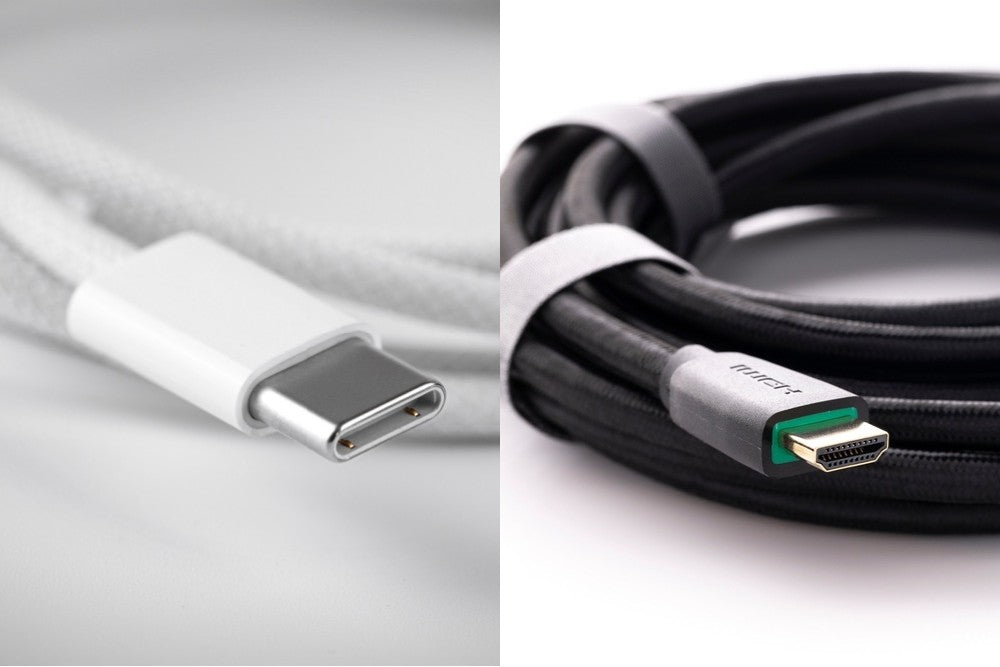
HDMI vs. Type-C Charging Cables: What’s the Difference?
In today’s technology-driven world, cables play a significant role in connecting devices, charging gadgets, and transferring data. Among the most commonly discussed options are HDMI and Type-C cables. While both are widely used, they serve distinct purposes and cater to different needs. Understanding their differences can help you choose the right cable for your specific requirements.
This guide will dive into the key differences between HDMI and Type-C cables, highlighting their unique features, uses, and advantages.
1. Understanding HDMI Cables
What Are HDMI Cables?
HDMI, or High-Definition Multimedia Interface, cables are primarily designed for transmitting audio and video signals. They are widely used to connect devices like TVs, monitors, projectors, and gaming consoles to media sources such as laptops, Blu-ray players, or set-top boxes.
Features of HDMI Cables
HDMI cables stand out for their ability to deliver high-quality video and audio. They support resolutions up to 4K and even 8K on modern devices. Moreover, HDMI cables can handle multiple audio channels, making them ideal for home theater setups.
When to Use HDMI Cables
If you’re looking to display content from one device onto a larger screen or need an immersive multimedia experience, HDMI charging cables are the go-to option. Whether you're connecting a laptop to a TV for movie night or setting up a presentation, HDMI cables ensure a seamless connection.
2. Getting to Know Type-C Cables
What Are Type-C Cables?
Type-C cables, commonly referred to as USB-C, represent the latest evolution in USB technology. They are versatile, compact, and reversible, making them convenient for modern gadgets. These cables are widely used for charging devices and transferring data.
Features of Type-C Cables
One of the standout features of Type-C cables is their ability to deliver power and data simultaneously. A Type-C charger, for example, can quickly charge smartphones, laptops, and tablets while enabling data transfer. Additionally, Type-C cables support faster charging speeds and higher data transfer rates compared to their predecessors.
When to Use Type-C Cables
If you need to charge your devices or transfer data between them, Type-C cables are an excellent choice. They are compatible with a wide range of devices, including smartphones, laptops, and even some modern monitors.
3. HDMI vs. Type-C: Key Differences
While both HDMI and Type-C cables are important in their own right, they cater to distinct needs. Here’s a closer look when comparing HDMI vs type C:
Purpose
When comparing HDMI vs Type C, The most significant difference lies in their purpose. HDMI cables are designed for transmitting high-definition video and audio signals, making them ideal for multimedia setups. In contrast, Type-C cables focus on charging devices and transferring data, although they can also support video output in some cases.
Compatibility
HDMI cables are primarily used with TVs, monitors, projectors, and gaming consoles. On the other hand, Type-C cables are compatible with a broader range of devices, including smartphones, tablets, laptops, and even certain external displays.
Reversibility
One major advantage of Type-C cables is their reversible design, allowing users to plug them in either way. HDMI cables, however, have a fixed orientation, which can sometimes be less convenient.
Data and Power Delivery
Type-C cables excel in delivering both power and data simultaneously, whereas HDMI cables focus exclusively on audio and video signals. For example, a Type-C charger can fast-charge a laptop while transferring files, making it highly versatile.
Audio and Video Quality
When it comes to audio and video, HDMI cables take the lead. They support ultra-high-definition video and multi-channel audio, which is perfect for home theaters and professional presentations. Type-C cables, while capable of supporting video in some cases, may not deliver the same quality as HDMI.
4. When to Choose HDMI Cables
HDMI cables are ideal in situations where high-quality audio and video transmission is the priority. Consider using HDMI cables in the following scenarios:
Connecting your TV to a gaming console or Blu-ray player.
Linking a laptop to a projector for presentations.
Setting up a home theater system for movies or gaming.
If your primary goal is an immersive multimedia experience, HDMI charging cables are your best bet.
5. When to Opt for Type-C Cables
Type-C cables are perfect for those who prioritize versatility and speed. They are an excellent choice for:
Charging smartphones, tablets, and laptops quickly.
Transferring large files between devices.
Connecting modern laptops to monitors that support USB-C input.
Additionally, if you value convenience, the reversible design of Type-C cables makes them incredibly user-friendly.
6. Can Type-C Cables Replace HDMI?
In certain cases, Type-C cables can serve as a substitute for HDMI cables. Many modern laptops and smartphones support video output through USB-C, allowing you to connect them to monitors or TVs using a USB-C to HDMI adapter. However, this setup may not always deliver the same level of video and audio quality as a direct HDMI connection.
For tasks that require flawless multimedia output, such as gaming or high-definition video playback, HDMI cables remain the superior choice.
7. Making the Right Choice
When comparing HDMI vs Type C cables, it ultimately depends on your needs. If you need to transmit high-definition audio and video, HDMI cables are the way to go. For charging and data transfer, a Type-C charger is more suitable. Understanding the strengths and limitations of each cable ensures you pick the right tool for the job.
8. Future Trends: The Evolution of HDMI and Type-C
Both HDMI and Type-C technologies continue to evolve, offering new features and capabilities. For instance, the latest HDMI standards now support 8K resolution and enhanced audio features, while Type-C cables are becoming more widespread across devices due to their versatility.
In the coming years, we can expect even greater integration of Type-C technology, with more devices adopting this universal standard. At the same time, HDMI will likely remain a staple for high-quality multimedia applications.
Conclusion
Choosing between HDMI and Type-C cables doesn’t have to be complicated. By understanding their distinct purposes and features, you can determine which cable best suits your needs. Whether you’re setting up a home theater or charging your laptop, both options offer unique advantages.
When it comes to HDMI vs. Type-C, it’s not about which is better but rather which one fits your specific requirements. With the right cable, you can enhance your technology experience and make the most of your devices.
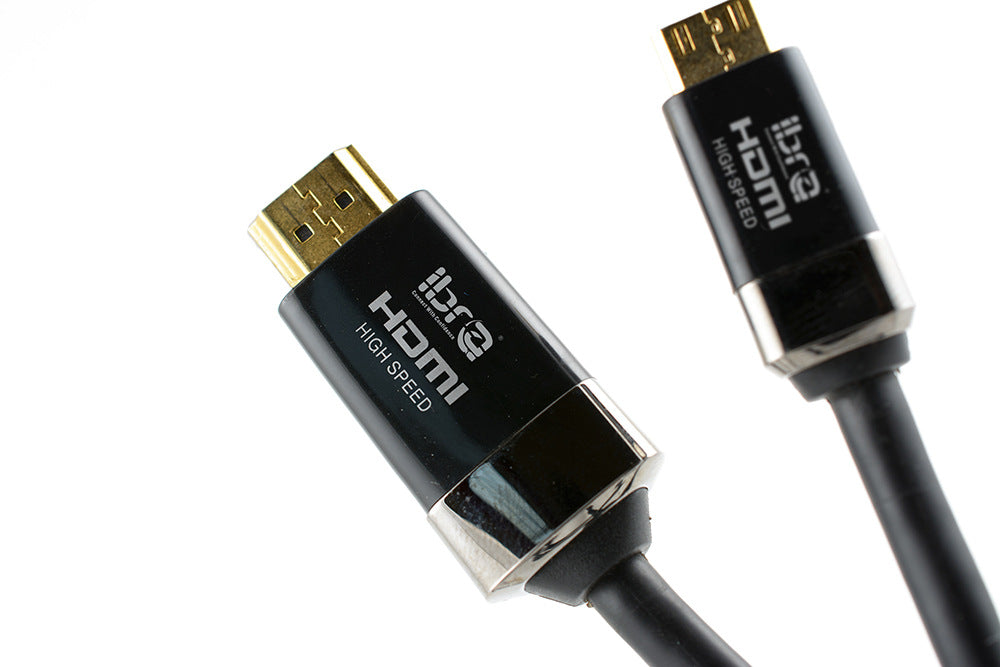
8K HDMI Fiber Optic Cables
Understanding Mini HDMI Cables: What You Need to Know
In today’s digital age, connectivity plays a crucial role in seamlessly sharing media and data across devices. One of the most compact and versatile solutions is the Mini HDMI cable. Whether you're connecting a camera to a monitor or a tablet to a TV, this small but mighty cable ensures high-quality audio and video transmission.
In this article, we’ll explore what Mini HDMI cables are, how they differ from standard HDMI cables, and why they’re essential for modern tech setups.
What is a Mini HDMI Cable?
A Mini HDMI cable is a smaller version of the standard HDMI (High-Definition Multimedia Interface) cable. It was designed to accommodate compact devices that don’t have space for a full-sized HDMI port. Despite its smaller size, a Mini HDMI cable delivers the same high-definition quality as its larger counterpart, making it ideal for portable gadgets.
Common devices that use mini HDMI ports include:
Digital cameras
Camcorders
Tablets
Portable gaming consoles
Transitioning from this overview, let’s explore the key differences between HDMI and mini HDMI to understand why these variations exist.
HDMI vs. Mini HDMI: Key Differences
At first glance, the most apparent difference between HDMI and mini HDMI is size. The standard HDMI connector measures approximately 14mm wide, while the mini HDMI connector is about 10.42mm wide. This reduced size makes mini HDMI connectors perfect for smaller devices without compromising performance.
Here are the main differences:
Size and Portability: Mini HDMI connectors are designed for compact devices, whereas standard HDMI connectors are used for larger gadgets like TVs, gaming consoles, and laptops.
Usage: Mini HDMI is commonly found on cameras and tablets, while standard HDMI is used in home theater systems and desktop monitors.
Adapters: If you need to connect a device with a mini HDMI port to a standard HDMI port, adapters or converter cables are readily available.
Transitioning to the next section, understanding these differences helps you choose the right cable for your specific needs.
Advantages of Using Mini HDMI Cables
When considering cables for smaller devices, the Mini HDMI cable stands out for several reasons:
1. Compact Design
The small size of the mini HDMI connector allows it to fit easily into compact devices, saving space without sacrificing quality. This makes it an excellent choice for portable equipment.
2. High-Quality Transmission
Like standard HDMI cables, Mini HDMI cables support high-definition video and audio, ensuring an immersive viewing and listening experience. They can handle resolutions up to 4K, making them suitable for professional videography or photography setups.
3. Versatility
From streaming videos to presenting slideshows, Mini HDMI cables serve a variety of purposes. They can connect your camera to a monitor for live previews or link your tablet to a TV for larger display options.
Transitioning to practical applications, let’s dive into where and how these cables are commonly used.
Where Do People Use Mini HDMI Cables?
The versatility of a Mini HDMI cable makes it a must-have accessory for many modern devices. Some of its most popular applications include:
1. Photography and Videography
Professional photographers and videographers often use mini HDMI ports to connect their cameras to external monitors. This setup allows them to view footage in real time, ensuring precise framing and focus.
2. Portable Gaming Consoles
Many handheld gaming consoles support mini HDMI connections, enabling users to project their games onto larger screens.
3. Tablets and Laptops
For those who use tablets or lightweight laptops, mini HDMI ports are often included to connect the device to a TV or monitor for presentations, gaming, or streaming.
4. Action Cameras
Action cameras, designed for adventurous shoots, often include mini HDMI ports for quick playback on larger screens.
Transitioning to the practical side, let’s explore what to look for when purchasing a small HDMI cable for your device.
Choosing the Right Mini HDMI Cable
When selecting a Mini HDMI cable, keep the following factors in mind to ensure compatibility and performance:
1. Cable Length
Choose a cable length that suits your needs. Short cables are ideal for stationary setups, while longer ones offer flexibility for dynamic environments.
2. Build Quality
Invest in cables with sturdy connectors and durable insulation to prevent wear and tear, especially if you’ll be using them frequently.
3. Compatibility
Ensure the cable supports the resolution and features your device requires. For instance, if you’re working with 4K video, the cable must support HDMI 2.0 or higher standards.
Transitioning to solutions, and understanding these factors will help you avoid common pitfalls when purchasing mini HDMI cables.
How to Maintain Your Mini HDMI Cable
Proper maintenance can prolong the lifespan of your Mini HDMI cable and ensure consistent performance. Here are some tips:
Avoid Bending the Cable: Excessive bending can damage the internal wiring. Use cable organizers to prevent tangling.
Protect the Connectors: Keep the connectors covered when not in use to avoid dust and debris buildup.
Store Properly: Coil the cable neatly and store it in a cool, dry place to prevent damage.
Transitioning to troubleshooting, these practices will help maintain the quality of your small HDMI cable over time.
Conclusion
Understanding the capabilities and advantages of Mini HDMI cables can enhance your tech experience, especially when dealing with compact devices. These cables bridge the gap between portability and high-quality performance, making them essential for photographers, gamers, and tech enthusiasts alike.
Whether you’re comparing HDMI and mini HDMI or looking for the perfect small HDMI cable, knowing what to look for ensures you make the right choice. By maintaining and using these cables correctly, you’ll enjoy seamless connections and top-notch audio-visual experiences for years to come.
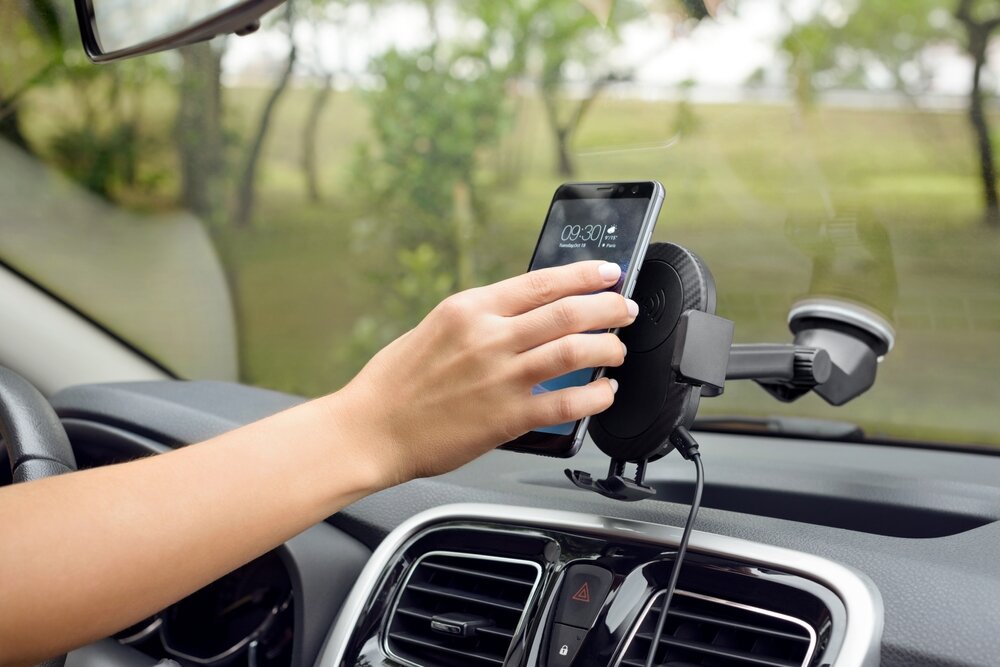
Car Mount
Top Reasons You Need a Car Mount for Safe Driving
Driving is a skill that requires focus, but distractions regularly come due to portable gadgets. Whether it's exploring with GPS, replying to calls, or controlling music, reaching for your phone while driving increases hazards. A car mount is a straightforward yet essential tool that promotes secure driving by keeping your phone within reach.
In this article, we’ll explore why investing in a car mount is essential for every driver. From security benefits to comfort, the reasons are compelling.
1. Upgraded security on the road
Safety is essential when driving. A car mount permits you to keep your hands on the wheel and your eyes on the street while still utilizing your phone for basic errands like navigation. Without a car mount, you might be tempted to pick up your phone to check directions or reply to a call. This distraction can lead to unsafe circumstances. By utilizing a car mount holder for a cell phone, you can reduce distractions and remain focused.
2. Helpful Navigation
Gone are the days of printed maps or bulky GPS gadgets. Nowadays, most drivers depend on their smartphones for routes. A car mount guarantees that your phone remains safely input, making it simple to follow directions.
With a car mount phone holder, you can alter the point and position of your phone to get a clear view of the screen. Whether you’re driving through a bustling city or exploring a remote area, a car mount guarantees that you never miss an exit.
3. Hands-free communication
Using your phone to make calls or send writing while driving is risky but too unlawful in numerous districts. A car mount permits you to lock in hands-free communication by matching your phone with Bluetooth or voice-activated features.
This usefulness is valuable for experts who require to remain associated while on the move. With your phone safely held in place, you can reply to calls or manage messages without compromising your driving safety.
4. Providing harm to your phone
When you don’t utilize a car mount, your phone is frequently cleared out on the dashboard or your lap. This increases the chance of your phone slipping or falling into sudden turns. A car mount kills this chance by giving a steady and secure spot for your phone. Numerous car mounts are planned with non-slip materials and movable holds, guaranteeing your gadget remains in place no matter how bumpy the ride gets.
5. Improves organization in your vehicle
Keeping your car organized can make your driving experience more enjoyable. A car mount holder for a cell phone makes a difference by giving your phone a devoted spot. Instead of scrambling to find your phone in other things, you’ll continuously know precisely where it is.
This organizational advantage amplifies other perspectives of your driving schedule, such as rapidly getting to your favorite playlists, checking the time, or managing notifications without making a pointless mess.
6. Flexible alternatives for each driver
Car mounts come with different plans to suit distinctive needs. From dashboard mounts to air vent mounts and suction cup models, you can select one that best fits your car's layout.
Some progressed car mounts come with remote charging capabilities, combining functionality and comfort. By investing in a car mount phone holder, you’re not only prioritizing security but improving your driving experience.
7. Legal compliance with hands-free laws
Many nations and states have actualized strict hands-free laws to check occupied driving. Utilizing your phone while driving can lead to strong fines and punishments, not to mention the potential dangers to your security and others on the road.
A car mount makes a difference as it helps you comply with these laws by allowing you to make hands-free use of your phone. With features like voice control, you can operate your gadget lawfully and responsibly.
8. Decreases driver fatigue
Long drives can be tiring, and always holding your phone or attempting to find it can include to strain. A phone holder eliminates this issue by providing a fixed and open spot for your device.
By decreasing physical exertion and minimizing diversions, a car mount makes a difference you remain more cautious and less exhausted during exhausting trips. This comfort guarantees a smooth journey.
Conclusion
A car mount offers more than just comfort. It's essential for secure driving. The benefits of utilizing a car mount are verifiable. Whether you require a car mount phone holder for navigation or a mobile phone holder for hands-free communication, this device can change your driving experience.
Don’t hold up until diversions lead to fines. Invest in a car mount holder for cell phones nowadays and make every drive safe and pleasant. After all, your security and peace of mind are worth it!
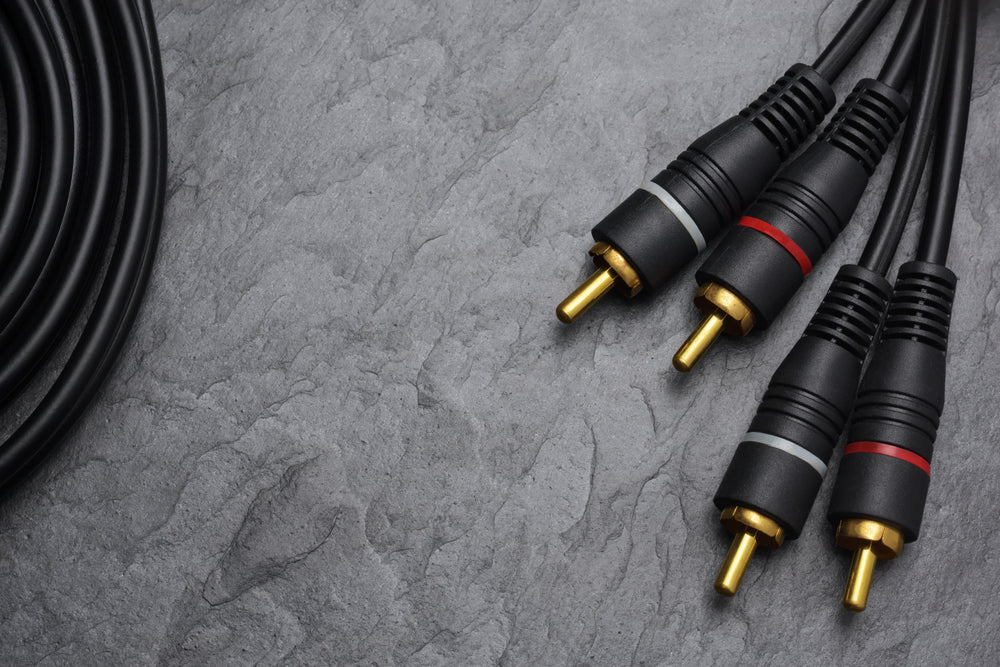
Jack RCA Cables
Why RCA Cables Are Still in Use | 7 Key Reasons
In a world overwhelmed by HDMI and USB innovations, you might ponder why RCA cables are still use. These humble connectors, which started in the 1940s, proceeded to serve specific needs in different industries and family units. Despite the progression of advanced audio-visual innovation, RCA cables hold their ground for a few reasons.
Let’s plunge into the seven key reasons why RCA cables stay in use.
1. Extensive compatibility
One of the fundamental reasons high-quality RCA cables are still prevalent is their extensive range of compatibility. RCA cables work consistently with an extensive range of gadgets, including TVs, DVD players, VCRs, and gaming devices. Several legacy systems were designed with RCA plugs as their primary output. This helps in ensuring they are useful to those who still utilize such equipment.
While present-day HDMI cables might offer way better execution, not all gadgets can support them. For example, vintage audio equipment and old gaming consoles require cables RCA to function properly. This wide compatibility keeps RCA cables in demand.
2. Cost-Effective Solution
For budget-conscious clients, RCA cables are a good alternative. High-end HDMI or optical cables can be expensive, particularly for casual clients who require essential associations. RCA cables, on the other hand, give a prudent way to interface gadgets without compromising on functionality.
Even high-quality RCA cables are moderately cheap compared to their cutting-edge partners. This cost-effectiveness makes them a perfect choice for numerous family units and businesses that depend on more seasoned equipment.
3. Solid Sound Transmission
RCA cables have long been related to dependable sound transmission. Music lovers appreciate the analog sound quality that RCA cables convey. These cables are important for interfacing turntables, amplifiers, and speakers to accomplish a normal audio output.
High-quality RCA cables can indeed improve sound clarity and diminish obstructions, guaranteeing a charming tuning in an encounter. This characteristic makes RCA cables a staple in domestic sound frameworks and recording studios.
4. Ease of Use
RCA cables are inconceivably user-friendly. With their straightforward plan, they make connecting gadgets straightforward. The color-coded plugs (ruddy, white, and yellow) help users identify where a cable is required to go. This helps to reduce errors.
Whether you’re setting up a home theater framework or creating a gaming system, RCA plugs make the handle fast and hassle-free. This effortlessness contributes to their popularity in different settings.
5. Toughness and Longevity
When it comes to reliability, RCA cables are built to sustain. Their design makes sure they can sustain wear and tear, making them good for use in the long term. Numerous clients report that their RCA cables have kept going for decades with appropriate care.
Additionally, high-quality RCA cables are outlined with durable covers and connectors, guaranteeing they stay useful indeed after a long time of use. This lifespan makes them a cost-effective venture for those who depend on more seasoned equipment.
6. Specialized Applications
While cables in the modern era rule most consumer markets, RCA cables serve specific niches where they exceed expectations. For occurrence, proficient DJs and artists regularly utilize RCA cables to connect mixers and turntables. Moreover, they’re used in car audio systems to connect amplifiers.
Another specialized application is in composite video associations, where RCA cables are pivotal for transmitting analog video signals. These applications ensure that RCA cables are an essential component of specific industries.
7. Preservation of vintage equipment
For collectors of vintage technology, RCA cables are irreplaceable. Whether you’re setting up an old-school gaming comfort or reestablishing a retro sound framework, RCA cables are an important alternative to guarantee compatibility.
The nostalgia associated with vintage equipment drives individuals to preserve and utilize these gadgets, and RCA cables are an essential part of that preservation. This cultural value ensures that RCA cables find a place in homes and collections.
Conclusion
Despite the rise of advanced technologies such as HDMI and USB, RCA cables stay significant for various reasons. Their far-reaching compatibility, reasonableness, and dependable execution make them crucial in different scenarios. From protecting vintage hardware to satisfying specialized needs, RCA cables proceed to demonstrate their worth.
Whether you’re utilizing high-quality RCA cables for high-quality audio or basic cables RCA for older devices, these connectors are not obsolete. Their ease of use and specialized applications guarantee they’ll stay a staple in the world of audio-visual innovation for a long time to come. So, if you ever come across RCA plugs, remember their practicality.
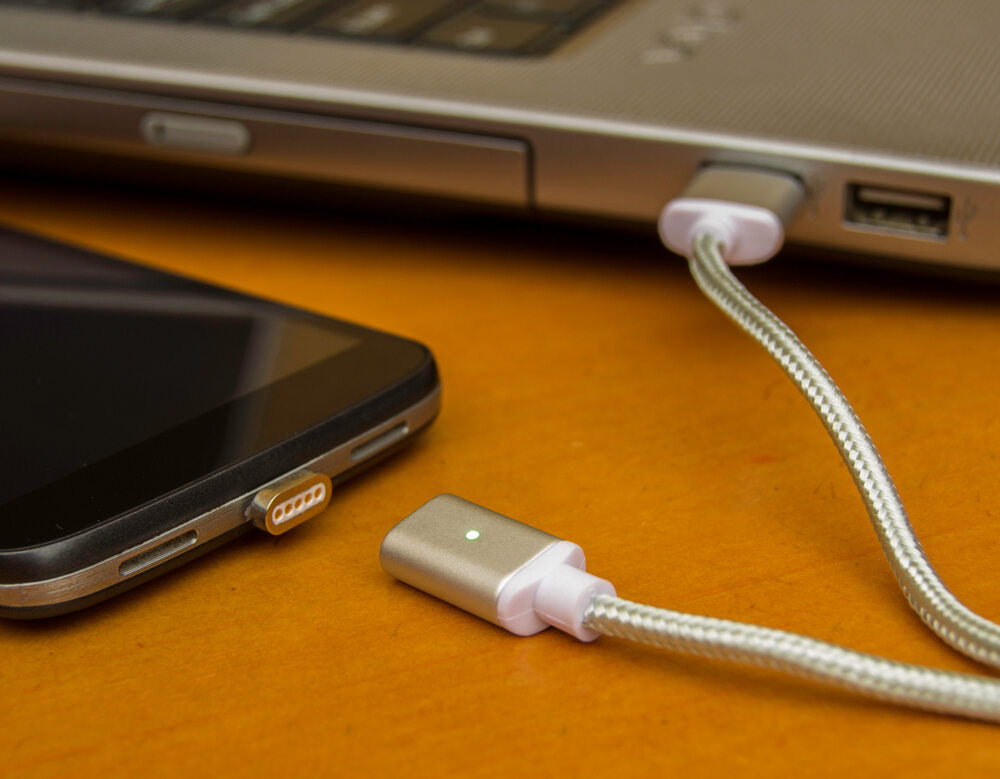
Magnet USB Charging Cable
A Beginner's Guide to Using Magnet USB Charging Cables
Charging cables are essential for modern households, yet they create a tangle of wires and frustration. Magnet USB charging cables have ended up a game-changer in this space, advertising comfort and effectiveness.
Whether you're modern to this innovative tool or considering making the switch, this guide will offer you assistance on how to utilize it successfully, and why it stands out from traditional cables.
What Are Magnet USB Charging Cables?
A magnet USB charging cable is a sort of cable that requires magnetic connectors to join your device’s charging cable. Contrary to conventional cables, they provide a snap-on design that makes connecting and disconnecting a breeze. The cable comes with a magnetic tip that plugs into your device and a magnetic head on the cable itself. When aligned, the magnets click together safely, initiating the charging process.
This design eliminates the use of mishandling with minor ports and decreases wear and tear on your device’s charging input. It’s an ideal solution for smartphones, tablets, and indeed other gadgets like portable workstations or remote headphones.
Why Select a Magnet USB Charging Cable?
If you’re tired of supplanting frayed wires or battling to plug in your gadget in the dull, magnet USB charging cables offer a hassle-free elective. They give a few preferences over conventional options.
Ease of utility: The attractive association permits speedy connection, making it user-friendly for all age groups.
Durability: By minimizing strain on your device’s charging cable, these cables extend the life expectancy of your device.
Versatility: Many models are consistent with a wide range of devices, making them a perfect cable for smartphones and other gadgets.
Transitioning to a magnet USB charging cable can essentially progress your charging involvement whereas moreover ensuring your devices.
How to Utilize a Magnet USB Charging Cable
Using a magnet USB charging cable is easy, even if you’re not tech-savvy. To get started, take these steps to follow:
Insert the magnetic tip: Start by plugging the magnetic tip into your device’s charging port. Make sure it fits and aligns properly.
Align the Cable: Hold the magnetic head of the cable near the magnetic tip. The magnets will snap together.
Connect to power: Plug the USB end of the cable into a power source, such as a wall adapter, power bank, or laptop.
Start Charging: Once connected, your gadget will start charging right away. Numerous models moreover back quick charging capabilities, which implies your gadget will be fueled up in less time.
Features to See for When Buying a Magnet USB Charging Cable
Before purchasing a magnet USB charging cable, consider some key points to guarantee you select the best choice for your needs.
Compatibility: Check if the cable underpins your gadget. Most magnet USB charging cables incorporate conversely tips for small-scale USB, USB-C, fast charging cables, and lightning connectors, making them reasonable for numerous devices.
Fast charging capability: See for a cable that underpins quick charging to spare time when fueling up your gadgets. A quick charging cable can altogether diminish the holding up time for a full charge.
Durability: Select a cable made with high-quality materials like nylon. These are more safe to wear and tear.
Magnet quality: Ensure the magnets are strong enough to hold the connection but still easy to detach when needed.
LED indicators: Some cables come with LED lights that show the charging status, including a touch of convenience.
Maintenance Tips for Your Magnet USB Charging Cable
To keep your cable functioning and extend its life expectancy, follow these tips:
Clean the magnetic tips: Dust can gather on the magnetic connectors over time. Clean them regularly with a soft cloth or a little brush.
Avoid pulling the cable: While the magnets are durable, avoid pulling the cable forcefully, as this can debilitate the connection over time.
Store properly: When not in use, coil the cable neatly and store it in a safe place to prevent tangling or bending.
Conclusion
The way you charge your devices can be completely transformed by switching to a fast-charging cable. With its ease of use, durability, and fast charging capabilities, it's an essential requirement for individuals looking to streamline their tech life. Whether you need a reliable cable for smartphones, tablets, or other contraptions, this inventive choice offers convenience.
Embrace the simplicity and convenience of magnet USB charging cables nowadays, and say farewell to the dissatisfaction of tangled wires and harmed ports. Invest in a top-quality cable, and enjoy the rewards.
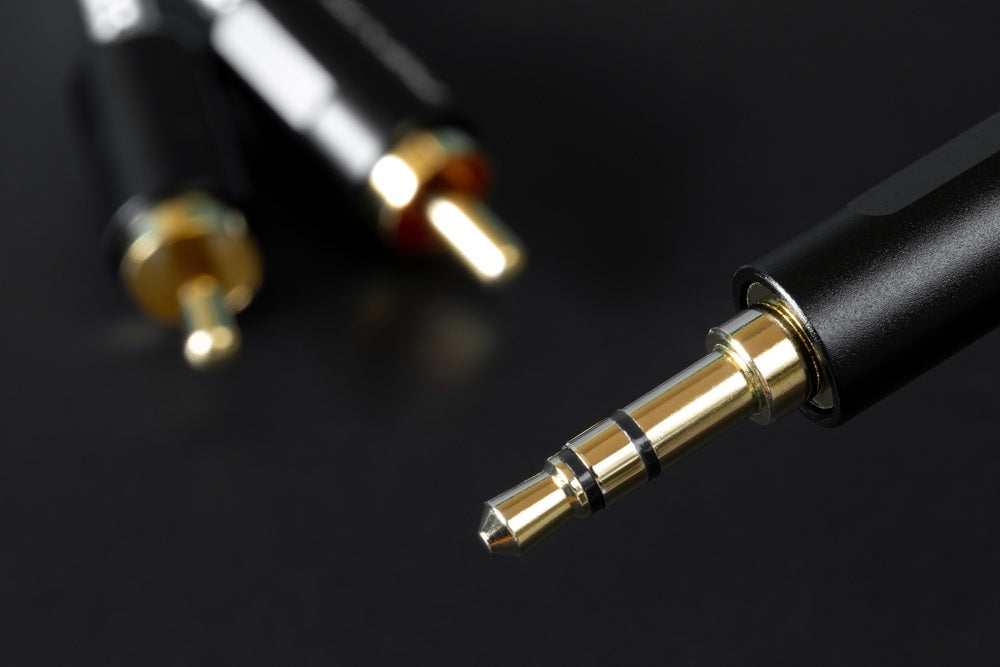
Jack RCA Cables
Jack RCA Cables vs. HDMI: Which is Better for Your Setup?
When setting up your home entertainment or audio system, choosing the right cables can significantly impact the quality of your experience. Two of the most commonly used options are Jack RCA cables and HDMI cables. While both serve the purpose of transmitting audio and video signals, they differ in functionality, quality, and application. Understanding these differences can help you decide which cable best suits your needs.
In this article, we will elaborate differences between Jack RCA Cables and HDMI. The article will explain which option is better for your setup.
What Are Jack RCA Cables?
Jack RCA cables have been a staple in audio and video setups for decades. These cables typically feature two or three connectors, each marked with different colors: red and white for audio, and yellow for video. RCA cables are commonly used for analog audio and standard-definition video signals, making them a versatile choice for older devices.
One of the main advantages of Jack RCA cables is their simplicity and wide compatibility. Many legacy devices, such as DVD players, VCRs, and older TVs, rely on these cables for connectivity. Despite their age, RCA cables remain relevant in various applications, particularly in audio setups.
Understanding HDMI Cables
HDMI, or High-Definition Multimedia Interface, is a modern cable standard designed to transmit high-quality audio and video signals digitally. 4K HDMI cables, in particular, are capable of delivering ultra-high-definition video with crystal-clear audio, making them a preferred choice for advanced home entertainment systems.
Unlike RCA cables, HDMI cables consolidate audio and video signals into a single connection. This streamlined design eliminates the need for multiple cables, reducing clutter and ensuring a cleaner setup. Additionally, HDMI supports modern features like 4K resolution, HDR, and surround sound, which RCA cables cannot handle.
Key Differences Between Jack RCA Cables and HDMI
1. Signal Transmission
Jack RCA cables transmit analog signals, which can result in some loss of quality over longer distances. They are ideal for standard-definition devices but lack the capabilities needed for high-definition content.
HDMI cables, on the other hand, transmit digital signals, ensuring minimal quality loss and higher fidelity. This makes HDMI the go-to choice for modern devices requiring high-definition or ultra-high-definition output.
2. Audio and Video Quality
RCA cables provide decent audio and video quality for older devices. However, they cannot match the clarity and precision offered by HDMI.
4K HDMI cables are designed to handle high-resolution video and multi-channel audio, delivering an immersive experience. If you’re setting up a 4K TV or a modern gaming console, HDMI is essential.
3. Compatibility
RCA cables are widely compatible with older devices, making them indispensable for vintage equipment.
HDMI is the standard for modern devices, including smart TVs, Blu-ray players, gaming consoles, and soundbars. If your setup includes devices from different eras, you might need adapters to bridge the gap between RCA and HDMI connections.
When to Use Jack RCA Cables
Jack RCA cables are a practical choice in several scenarios:
Vintage Equipment: If you’re using older devices like VCRs, vintage gaming consoles, or older sound systems, RCA cables are often the only option.
Audio Systems: Many audio setups still use RCA connectors, particularly in amplifiers and speakers. They are reliable for transmitting stereo sound.
Budget-Friendly Options: RCA cables are inexpensive and widely available, making them an economical choice for basic setups.
However, keep in mind that RCA cables have limitations. They cannot support high-definition video or advanced audio formats, so they may not meet the requirements of modern entertainment systems.
When to opt for HDMI
HDMI cables are ideal for newer devices and high-performance setups. Here’s when you should choose HDMI:
High-Definition and 4K Content: If you have a 4K TV, Blu-ray player, or gaming console, HDMI is essential to enjoy high-resolution video and immersive audio.
Minimal Clutter: HDMI simplifies your setup by combining audio and video signals into a single cable, reducing the number of wires you need.
Advanced Features: HDMI supports features like HDR, Dolby Atmos, and ARC (Audio Return Channel), which are unavailable with RCA cables.
Can You Use Both in One Setup?
In some cases, you might find yourself needing both Jack RCA cables and HDMI in the same setup. For example, if you’re connecting a vintage device to a modern TV, you can use an RCA-to-HDMI converter. This allows you to enjoy older equipment while taking advantage of HDMI’s capabilities on newer displays.
Comparing Costs
Another factor to consider is cost. Jack RCA cables are generally more affordable than HDMI cables, which makes them appealing for simple setups. However, the price of HDMI cables has decreased over the years, and you can now find reliable 4K HDMI cables at reasonable prices. Investing in HDMI is worthwhile for future-proofing your setup, especially if you plan to upgrade your devices.
The Final Verdict
Choosing between Jack RCA cables and HDMI ultimately depends on your specific needs and the devices in your setup. If you’re working with vintage equipment or need a budget-friendly option for basic audio connections, Jack RCA cables are a practical choice. On the other hand, HDMI is the superior option for modern setups, offering unparalleled audio and video quality along with advanced features.
For a hybrid setup, consider using adapters or converters to bridge the gap between the two types of cables. This way, you can enjoy the best of both worlds and maximize the performance of your devices.
Conclusion
Both Jack RCA cables and HDMI have their strengths and weaknesses. While RCA cables are reliable for legacy devices and simple audio connections, HDMI reigns supreme for high-definition and 4K content. Evaluate your equipment, setup goals, and budget to make an informed decision.
By choosing the right cables, you can enhance your viewing and listening experience, whether you’re watching vintage movies or streaming the latest 4K content. Make your setup truly shine with the cables that best suit your needs!
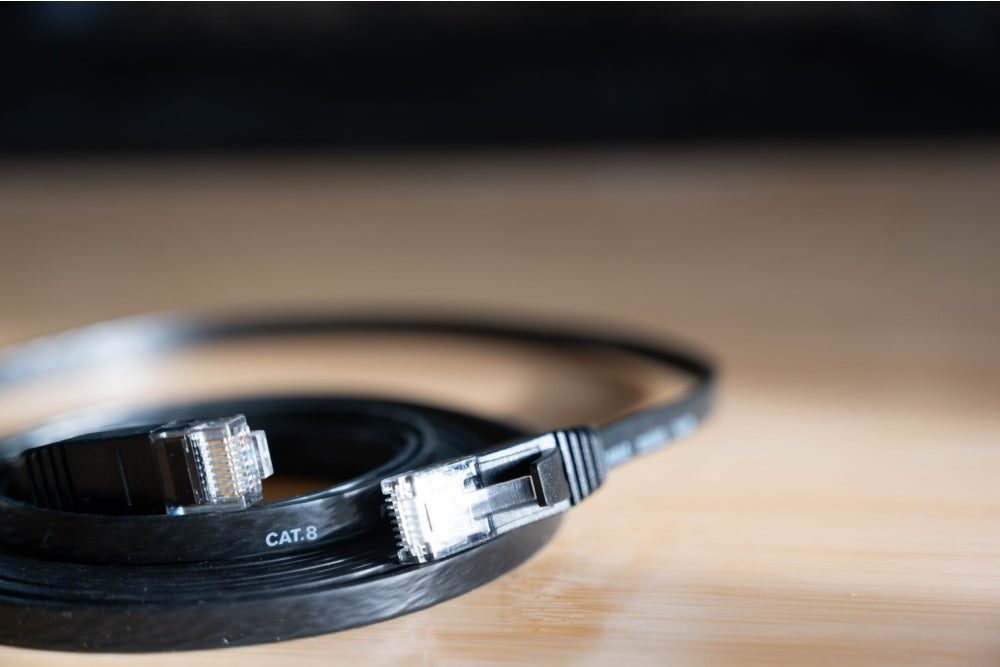
CAT 8 Flat Cable
What is CAT 8 Flat Cable and Why Should You Use It?
So, ever heard of a CAT 8 Flat Cable? If not, don’t worry – you’re about to dive into the world of high-speed internet cables and discover why CAT 8 flat cables might be the ultimate choice for fast and reliable connections. Whether you love gaming, streaming movies, or just browsing the web, this cable could make a big difference in your online experience!
What Exactly is CAT 8 Cable?
So, imagine your internet like a speedy car on a racetrack. Moreover, the faster the car, the quicker you reach your destination. Furthermore, in the world of the internet, CAT 8 (Category 8) cables are like racecars, designed to provide extremely fast internet speeds.
CAT 8 cables belong to a family of cables called Ethernet cables. Moreover, these cables are used to connect computers, gaming consoles, and other devices to the internet. Furthermore, ethernet cables range from CAT 1 to CAT 8, with each type representing a different level of speed and performance. But, guess what? CAT 8 is the newest and fastest member of the family!
Flat vs. Round Ethernet Cables – What’s the Difference?
Most Ethernet cables are round in shape, but CAT 8 Flat Cable, as the name suggests, are flat. So why does that matter?
Space-saving design: Flat cables are easier to fit under carpets, along walls, and in tight spaces. So if you want a neat and tidy setup without any bulky cords, flat cables are perfect.
Flexible and easy to manage: Because they’re flat, these cables are less likely to twist and tangle, making them easier to manage. They’re great for home or office setups where you want everything organized and out of the way.
Durability: Flat cables are strong and resistant to damage. If you need to move them around or tuck them into corners, they won’t wear out as quickly as some other cables.
Speed and Performance – How Fast is CAT 8?
Let’s talk speed! CAT 8 cables are known for their blazing-fast internet speeds. They can handle data speeds up to 40 Gbps (that’s gigabits per second!), and they’re designed to work at frequencies of up to 2,000 MHz. This means they’re super fast and great for handling a lot of data all at once.
For comparison:
CAT 5e cables: Up to 1 Gbps
CAT 6 cables: Up to 10 Gbps
CAT 7 cables: Up to 10 Gbps (but with better shielding)
CAT 8 cables: Up to 40 Gbps
CAT 8 cables are perfect for gaming, streaming ultra-high-definition (UHD) videos, or any activity that requires lightning-fast internet.
Why Should You Use CAT 8 Flat Cables?
So, why should you choose a CAT 8 Flat Cable over other types? Here are some great reasons:
Faster Data Transfer: CAT 8 flat cables transfer data at incredible speeds, so you’ll experience less lag and faster loading times.
Perfect for High-Performance Uses: If you’re into online gaming, video conferencing, or streaming movies, CAT 8 can handle it all without slowing down.
Future-Proofing: Technology keeps advancing, and CAT 8 is built to keep up with future internet speeds. By choosing a CAT 8 cable, you’re making an investment that will be useful for years to come.
Easy Installation: With their flat design, CAT 8 cables are super easy to set up around the house. No more tangled cords or messy setups!
How Do CAT 8 Flat Cables Work?
CAT 8 cables, just like other Ethernet cables, send data in the form of electrical signals. However, they’re different because they have more advanced shielding and insulation. This protects the data from interference, ensuring it reaches your device quickly and clearly.
The flat design of CAT 8 flat cables helps the cable remain stable and reduce interference even more, leading to consistent, high-quality connections.
Where Can You Use CAT 8 Flat Cables?
You can use CAT8 Lan Flat Cables in many places:
Home Networks: Connect your gaming consoles, computers, and smart TVs to the internet.
Offices: For high-speed connections between multiple devices, CAT 8 is a reliable choice.
Data Centers: Data centers often use CAT 8 because it’s fast and dependable, handling large amounts of information at once.
How to Choose the Right CAT 8 Flat Cable?
When buying a CAT 8 flat cable, here’s what to consider:
Cable Length: Choose a cable that’s long enough to connect your devices but not so long that it becomes messy.
Shielding Quality: Higher-quality shielding helps maintain a stable connection.
Connector Type: Make sure the connectors (the plugs on each end) match your device’s input.
Durability: Look for a cable with good durability so it lasts longer, especially if you need to move it around.
Conclusion
CAT 8 Lan Cables are a smart choice if you want fast, reliable, and durable internet connections. With its high speed, flat design, and excellent performance, this cable is ideal for gamers, streamers, or anyone who needs a top-quality internet connection.
